#wood lintels
Explore tagged Tumblr posts
Text
Front Yard Porch

Idea for a large concrete porch in the mountain style
0 notes
Photo

Porch in New Orleans Inspiration for a mid-sized timeless brick front porch remodel
0 notes
Photo

Stone - Rustic Exterior Ideas for a substantial two-story, rustic gray stone exterior home remodel
0 notes
Photo

Front Yard - Rustic Porch
#Idea for a large concrete porch in the mountain style lodge style#cultured stone#weathershield windows#timber frame front porch#wood lintels
0 notes
Text
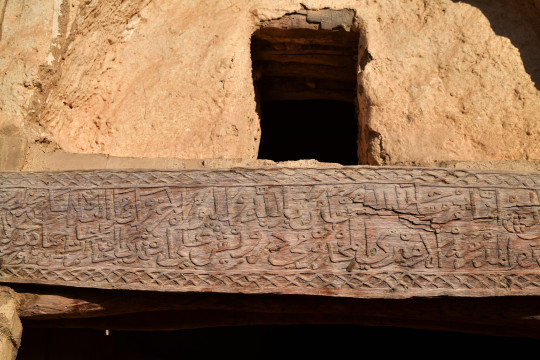



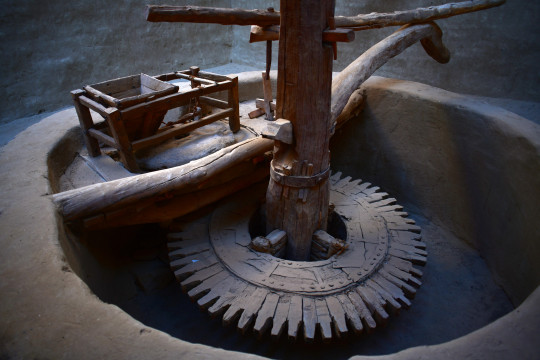
Al Qasr (2) (3) (4) (5) by Panegyrics of Granovetter
Via Flickr:
The old city dates to the Ottoman period (10th century CE) and sits astride important desert trade routes. (1) carved lintel (5) mill equipment
2 notes
·
View notes
Photo

Mudroom - Front Door Inspiration for a mid-sized contemporary slate floor entryway remodel with white walls and a medium wood front door
0 notes
Photo

Cheshire Family Room Library
#Mid-sized trendy open concept ceramic tile and white floor family room library photo with white walls#a wood stove#a plaster fireplace and no tv curtains#woodburner#accent chairs#contemporary#oak lintel
0 notes
Photo
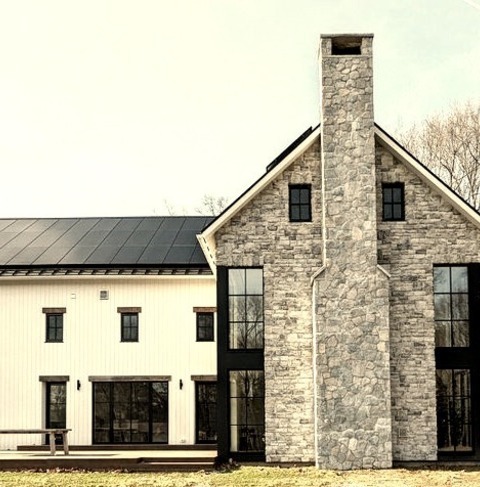
Exterior Fiberboard in New York
#Inspiration for a huge transitional beige three-story concrete fiberboard and clapboard exterior home remodel with a metal roof and a gray r#green architect#green homes#net zero#passive house#boral#kevony wood lintel
0 notes
Text
Fantasy Guide to Interiors



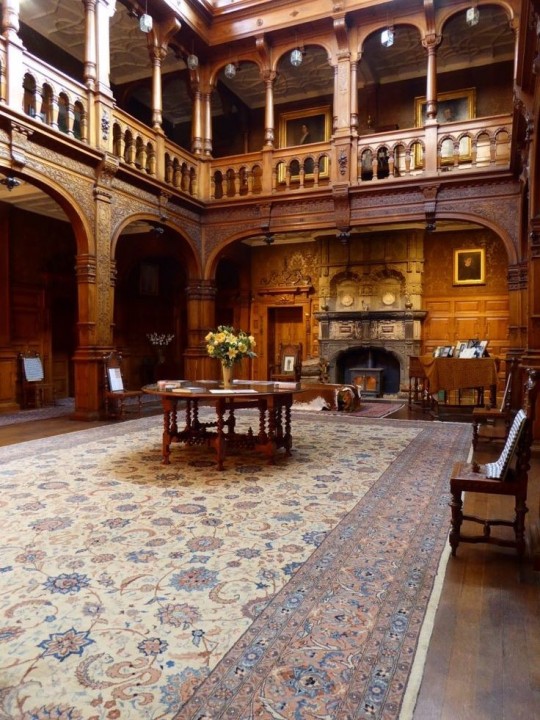
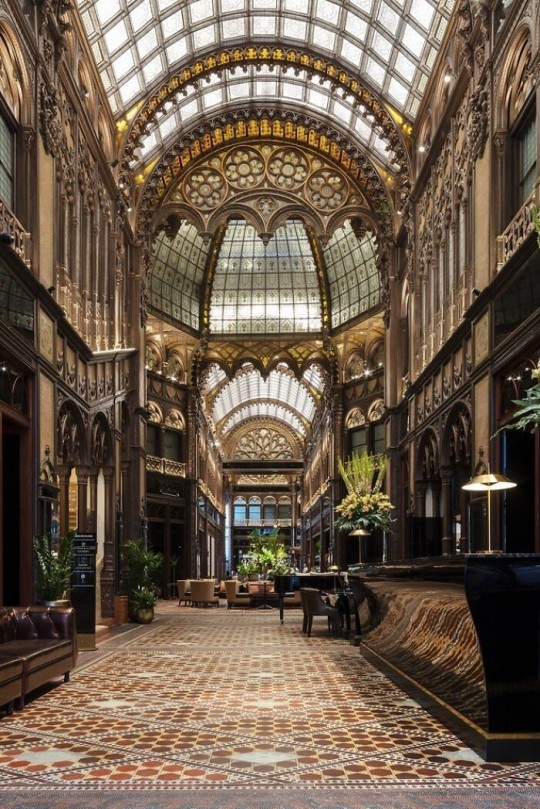
As a followup to the very popular post on architecture, I decided to add onto it by exploring the interior of each movement and the different design techniques and tastes of each era. This post at be helpful for historical fiction, fantasy or just a long read when you're bored.
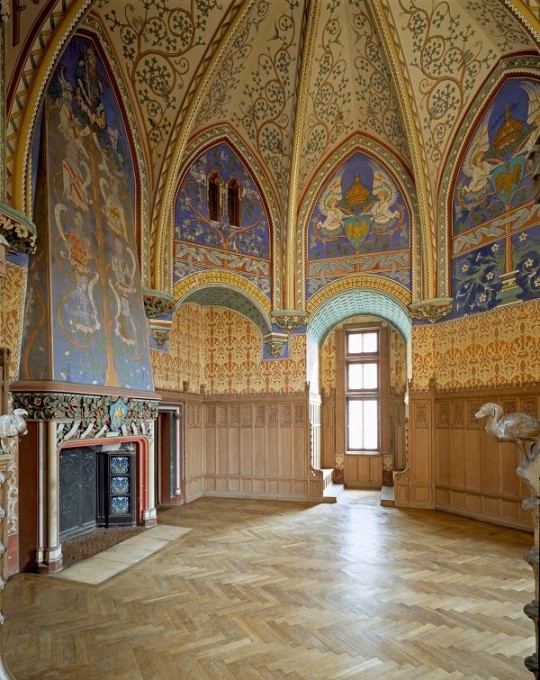
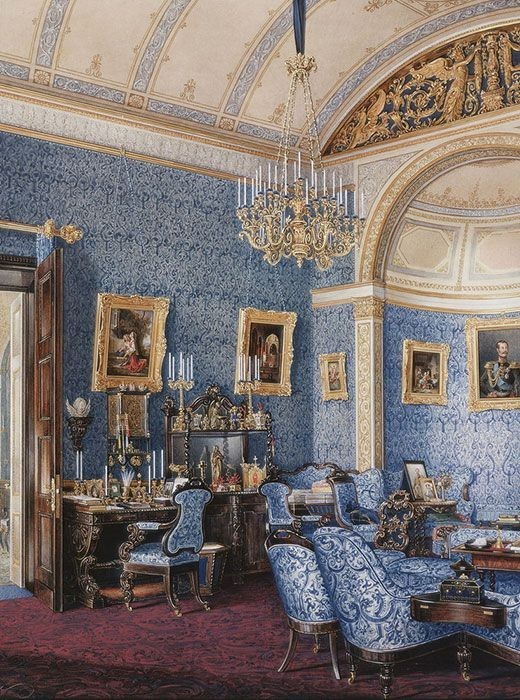
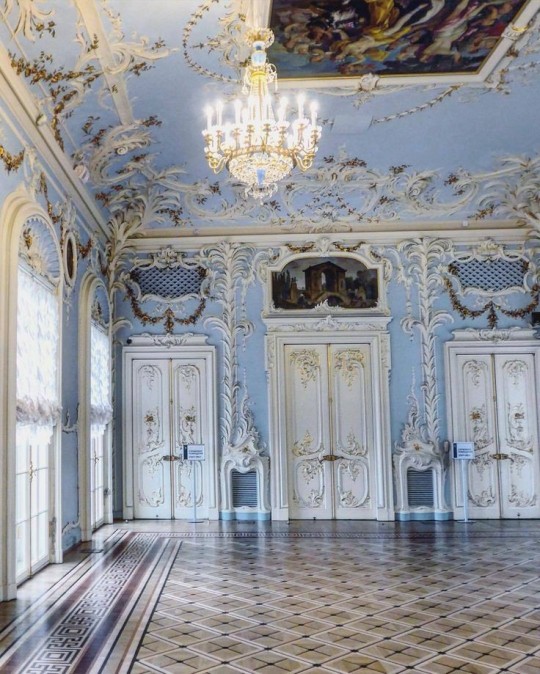
Interior Design Terms
Reeding and fluting: Fluting is a technique that consists a continuous pattern of concave grooves in a flat surface across a surface. Reeding is it's opposite.
Embossing: stamping, carving or moulding a symbol to make it stand out on a surface.
Paneling: Panels of carved wood or fabric a fixed to a wall in a continuous pattern.
Gilding: the use of gold to highlight features.
Glazed Tile: Ceramic or porcelain tiles coated with liquid coloured glass or enamel.
Column: A column is a pillar of stone or wood built to support a ceiling. We will see more of columns later on.
Bay Window: The Bay Window is a window projecting outward from a building.
Frescos: A design element of painting images upon wet plaster.
Mosaic: Mosaics are a design element that involves using pieces of coloured glass and fitted them together upon the floor or wall to form images.
Mouldings: ornate strips of carved wood along the top of a wall.
Wainscoting: paneling along the lower portion of a wall.
Chinoiserie: A European take on East Asian art. Usually seen in wallpaper.
Clerestory: A series of eye-level windows.
Sconces: A light fixture supported on a wall.
Niche: A sunken area within a wall.
Monochromatic: Focusing on a single colour within a scheme.
Ceiling rose: A moulding fashioned on the ceiling in the shape of a rose usually supporting a light fixture.
Baluster: the vertical bars of a railing.
Façade: front portion of a building
Lintel: Top of a door or window.
Portico: a covered structure over a door supported by columns
Eaves: the part of the roof overhanging from the building
Skirting: border around lower length of a wall
Ancient Greece
Houses were made of either sun-dried clay bricks or stone which were painted when they dried. Ground floors were decorated with coloured stones and tiles called Mosaics. Upper level floors were made from wood. Homes were furnished with tapestries and furniture, and in grand homes statues and grand altars would be found. Furniture was very skillfully crafted in Ancient Greece, much attention was paid to the carving and decoration of such things. Of course, Ancient Greece is ancient so I won't be going through all the movements but I will talk a little about columns.
Doric: Doric is the oldest of the orders and some argue it is the simplest. The columns of this style are set close together, without bases and carved with concave curves called flutes. The capitals (the top of the column) are plain often built with a curve at the base called an echinus and are topped by a square at the apex called an abacus. The entablature is marked by frieze of vertical channels/triglyphs. In between the channels would be detail of carved marble. The Parthenon in Athens is your best example of Doric architecture.
Ionic: The Ionic style was used for smaller buildings and the interiors. The columns had twin volutes, scroll-like designs on its capital. Between these scrolls, there was a carved curve known as an egg and in this style the entablature is much narrower and the frieze is thick with carvings. The example of Ionic Architecture is the Temple to Athena Nike at the Athens Acropolis.
Corinthian: The Corinthian style has some similarities with the Ionic order, the bases, entablature and columns almost the same but the capital is more ornate its base, column, and entablature, but its capital is far more ornate, commonly carved with depictions of acanthus leaves. The style was more slender than the others on this list, used less for bearing weight but more for decoration. Corinthian style can be found along the top levels of the Colosseum in Rome.
Tuscan: The Tuscan order shares much with the Doric order, but the columns are un-fluted and smooth. The entablature is far simpler, formed without triglyphs or guttae. The columns are capped with round capitals.
Composite: This style is mixed. It features the volutes of the Ionic order and the capitals of the Corinthian order. The volutes are larger in these columns and often more ornate. The column's capital is rather plain. for the capital, with no consistent differences to that above or below the capital.
Ancient Rome
Rome is well known for its outward architectural styles. However the Romans did know how to add that rizz to the interior. Ceilings were either vaulted or made from exploded beams that could be painted. The Romans were big into design. Moasics were a common interior sight, the use of little pieces of coloured glass or stone to create a larger image. Frescoes were used to add colour to the home, depicting mythical figures and beasts and also different textures such as stonework or brick. The Romans loved their furniture. Dining tables were low and the Romans ate on couches. Weaving was a popular pastime so there would be tapestries and wall hangings in the house. Rich households could even afford to import fine rugs from across the Empire. Glass was also a feature in Roman interior but windows were usually not paned as large panes were hard to make. Doors were usually treated with panels that were carved or in lain with bronze.
Ancient Egypt
Egypt was one of the first great civilisations, known for its immense and grand structures. Wealthy Egyptians had grand homes. The walls were painted or plastered usually with bright colours and hues. The Egyptians are cool because they mapped out their buildings in such a way to adhere to astrological movements meaning on special days if the calendar the temple or monuments were in the right place always. The columns of Egyptian where thicker, more bulbous and often had capitals shaped like bundles of papyrus reeds. Woven mats and tapestries were popular decor. Motifs from the river such as palms, papyrus and reeds were popular symbols used.
Ancient Africa
African Architecture is a very mixed bag and more structurally different and impressive than Hollywood would have you believe. Far beyond the common depictions of primitive buildings, the African nations were among the giants of their time in architecture, no style quite the same as the last but just as breathtaking.
Rwandan Architecture: The Rwandans commonly built of hardened clay with thatched roofs of dried grass or reeds. Mats of woven reeds carpeted the floors of royal abodes. These residences folded about a large public area known as a karubanda and were often so large that they became almost like a maze, connecting different chambers/huts of all kinds of uses be they residential or for other purposes.
Ashanti Architecture: The Ashanti style can be found in present day Ghana. The style incorporates walls of plaster formed of mud and designed with bright paint and buildings with a courtyard at the heart, not unlike another examples on this post. The Ashanti also formed their buildings of the favourite method of wattle and daub.
Nubian Architecture: Nubia, in modern day Ethiopia, was home to the Nubians who were one of the world's most impressive architects at the beginning of the architecture world and probably would be more talked about if it weren't for the Egyptians building monuments only up the road. The Nubians were famous for building the speos, tall tower-like spires carved of stone. The Nubians used a variety of materials and skills to build, for example wattle and daub and mudbrick. The Kingdom of Kush, the people who took over the Nubian Empire was a fan of Egyptian works even if they didn't like them very much. The Kushites began building pyramid-like structures such at the sight of Gebel Barkal
Japanese Interiors
Japenese interior design rests upon 7 principles. Kanso (簡素)- Simplicity, Fukinsei (不均整)- Asymmetry, Shizen (自然)- Natural, Shibumi (渋味) – Simple beauty, Yugen (幽玄)- subtle grace, Datsuzoku (脱俗) – freedom from habitual behaviour, Seijaku (静寂)- tranquillity.
Common features of Japanese Interior Design:
Shoji walls: these are the screens you think of when you think of the traditional Japanese homes. They are made of wooden frames, rice paper and used to partition
Tatami: Tatami mats are used within Japanese households to blanket the floors. They were made of rice straw and rush straw, laid down to cushion the floor.
Genkan: The Genkan was a sunken space between the front door and the rest of the house. This area is meant to separate the home from the outside and is where shoes are discarded before entering.
Japanese furniture: often lowest, close to the ground. These include tables and chairs but often tanked are replaced by zabuton, large cushions. Furniture is usually carved of wood in a minimalist design.
Nature: As both the Shinto and Buddhist beliefs are great influences upon architecture, there is a strong presence of nature with the architecture. Wood is used for this reason and natural light is prevalent with in the home. The orientation is meant to reflect the best view of the world.
Islamic World Interior
The Islamic world has one of the most beautiful and impressive interior design styles across the world. Colour and detail are absolute staples in the movement. Windows are usually not paned with glass but covered in ornate lattices known as jali. The jali give ventilation, light and privacy to the home. Islamic Interiors are ornate and colourful, using coloured ceramic tiles. The upper parts of walls and ceilings are usually flat decorated with arabesques (foliate ornamentation), while the lower wall areas were usually tiled. Features such as honeycombed ceilings, horseshoe arches, stalactite-fringed arches and stalactite vaults (Muqarnas) are prevalent among many famous Islamic buildings such as the Alhambra and the Blue Mosque.
Byzantine (330/395–1453 A. D)
The Byzantine Empire or Eastern Roman Empire was where eat met west, leading to a melting pot of different interior designs based on early Christian styles and Persian influences. Mosaics are probably what you think of when you think of the Byzantine Empire. Ivory was also a popular feature in the Interiors, with carved ivory or the use of it in inlay. The use of gold as a decorative feature usually by way of repoussé (decorating metals by hammering in the design from the backside of the metal). Fabrics from Persia, heavily embroidered and intricately woven along with silks from afar a field as China, would also be used to upholster furniture or be used as wall hangings. The Byzantines favoured natural light, usually from the use of copolas.
Indian Interiors
India is of course, the font of all intricate designs. India's history is sectioned into many eras but we will focus on a few to give you an idea of prevalent techniques and tastes.
The Gupta Empire (320 – 650 CE): The Gupta era was a time of stone carving. As impressive as the outside of these buildings are, the Interiors are just as amazing. Gupta era buildings featured many details such as ogee (circular or horseshoe arch), gavaksha/chandrashala (the motif centred these arches), ashlar masonry (built of squared stone blocks) with ceilings of plain, flat slabs of stone.
Delhi Sultanate (1206–1526): Another period of beautifully carved stone. The Delhi sultanate had influence from the Islamic world, with heavy uses of mosaics, brackets, intricate mouldings, columns and and hypostyle halls.
Mughal Empire (1526–1857): Stonework was also important on the Mughal Empire. Intricately carved stonework was seen in the pillars, low relief panels depicting nature images and jalis (marble screens). Stonework was also decorated in a stye known as pietra dura/parchin kari with inscriptions and geometric designs using colored stones to create images. Tilework was also popular during this period. Moasic tiles were cut and fitted together to create larger patters while cuerda seca tiles were coloured tiles outlined with black.
Chinese Interiors
Common features of Chinese Interiors
Use of Colours: Colour in Chinese Interior is usually vibrant and bold. Red and Black are are traditional colours, meant to bring luck, happiness, power, knowledge and stability to the household.
Latticework: Lattices are a staple in Chinese interiors most often seen on shutters, screens, doors of cabinets snf even traditional beds.
Lacquer: Multiple coats of lacquer are applied to furniture or cabinets (now walls) and then carved. The skill is called Diaoqi (雕漆).
Decorative Screens: Screens are used to partition off part of a room. They are usually of carved wood, pained with very intricate murals.
Shrines: Spaces were reserved on the home to honour ancestors, usually consisting of an altar where offerings could be made.
Of course, Chinese Interiors are not all the same through the different eras. While some details and techniques were interchangeable through different dynasties, usually a dynasty had a notable style or deviation. These aren't all the dynasties of course but a few interesting examples.
Song Dynasty (960–1279): The Song Dynasty is known for its stonework. Sculpture was an important part of Song Dynasty interior. It was in this period than brick and stone work became the most used material. The Song Dynasty was also known for its very intricate attention to detail, paintings, and used tiles.
Ming Dynasty(1368–1644): Ceilings were adorned with cloisons usually featuring yellow reed work. The floors would be of flagstones usually of deep tones, mostly black. The Ming Dynasty favoured richly coloured silk hangings, tapestries and furnishings. Furniture was usually carved of darker woods, arrayed in a certain way to bring peace to the dwelling.
Han Dynasty (206 BC-220 AD): Interior walls were plastered and painted to show important figures and scenes. Lacquer, though it was discovered earlier, came into greater prominence with better skill in this era.
Tang Dynasty (618–907) : The colour palette is restrained, reserved. But the Tang dynasty is not without it's beauty. Earthenware reached it's peak in this era, many homes would display fine examples as well. The Tang dynasty is famous for its upturned eaves, the ceilings supported by timber columns mounted with metal or stone bases. Glazed tiles were popular in this era, either a fixed to the roof or decorating a screen wall.
Romanesque (6th -11th century/12th)
Romanesque Architecture is a span between the end of Roman Empire to the Gothic style. Taking inspiration from the Roman and Byzantine Empires, the Romanesque period incorporates many of the styles. The most common details are carved floral and foliage symbols with the stonework of the Romanesque buildings. Cable mouldings or twisted rope-like carvings would have framed doorways. As per the name, Romansque Interiors relied heavily on its love and admiration for Rome. The Romanesque style uses geometric shapes as statements using curves, circles snf arches. The colours would be clean and warm, focusing on minimal ornamentation.
Gothic Architecture (12th Century - 16th Century)
The Gothic style is what you think of when you think of old European cathedrals and probably one of the beautiful of the styles on this list and one of most recognisable. The Gothic style is a dramatic, opposing sight and one of the easiest to describe. Decoration in this era became more ornate, stonework began to sport carving and modelling in a way it did not before. The ceilings moved away from barreled vaults to quadripartite and sexpartite vaulting. Columns slimmed as other supportive structures were invented. Intricate stained glass windows began their popularity here. In Gothic structures, everything is very symmetrical and even.
Mediaeval (500 AD to 1500)
Interiors of mediaeval homes are not quite as drab as Hollywood likes to make out. Building materials may be hidden by plaster in rich homes, sometimes even painted. Floors were either dirt strewn with rushes or flagstones in larger homes. Stonework was popular, especially around fireplaces. Grand homes would be decorated with intricate woodwork, carved heraldic beasts and wall hangings of fine fabrics.
Renaissance (late 1300s-1600s)
The Renaissance was a period of great artistry and splendor. The revival of old styles injected symmetry and colour into the homes. Frescoes were back. Painted mouldings adorned the ceilings and walls. Furniture became more ornate, fixed with luxurious upholstery and fine carvings. Caryatids (pillars in the shape of women), grotesques, Roman and Greek images were used to spruce up the place. Floors began to become more intricate, with coloured stone and marble. Modelled stucco, sgraffiti arabesques (made by cutting lines through a layer of plaster or stucco to reveal an underlayer), and fine wall painting were used in brilliant combinations in the early part of the 16th century.
Tudor Interior (1485-1603)
The Tudor period is a starkly unique style within England and very recognisable. Windows were fixed with lattice work, usually casement. Stained glass was also in in this period, usually depicting figures and heraldic beasts. Rooms would be panelled with wood or plastered. Walls would be adorned with tapestries or embroidered hangings. Windows and furniture would be furnished with fine fabrics such as brocade. Floors would typically be of wood, sometimes strewn with rush matting mixed with fresh herbs and flowers to freshen the room.
Baroque (1600 to 1750)
The Baroque period was a time for splendor and for splashing the cash. The interior of a baroque room was usually intricate, usually of a light palette, featuring a very high ceiling heavy with detail. Furniture would choke the room, ornately carved and stitched with very high quality fabrics. The rooms would be full of art not limited to just paintings but also sculptures of marble or bronze, large intricate mirrors, moldings along the walls which may be heavily gilded, chandeliers and detailed paneling.
Victorian (1837-1901)
We think of the interiors of Victorian homes as dowdy and dark but that isn't true. The Victorians favoured tapestries, intricate rugs, decorated wallpaper, exquisitely furniture, and surprisingly, bright colour. Dyes were more widely available to people of all stations and the Victorians did not want for colour. Patterns and details were usually nature inspired, usually floral or vines. Walls could also be painted to mimic a building material such as wood or marble and most likely painted in rich tones. The Victorians were suckers for furniture, preferring them grandly carved with fine fabric usually embroidered or buttoned. And they did not believe in minimalism. If you could fit another piece of furniture in a room, it was going in there. Floors were almost eclusively wood laid with the previously mentioned rugs. But the Victorians did enjoy tiled floors but restricted them to entrances. The Victorians were quite in touch with their green thumbs so expect a lot of flowers and greenery inside. with various elaborately decorated patterned rugs. And remember, the Victorians loved to display as much wealth as they could. Every shelf, cabinet, case and ledge would be chocked full of ornaments and antiques.
Edwardian/The Gilded Age/Belle Epoque (1880s-1914)
This period (I've lumped them together for simplicity) began to move away from the deep tones and ornate patterns of the Victorian period. Colour became more neutral. Nature still had a place in design. Stained glass began to become popular, especially on lampshades and light fixtures. Embossing started to gain popularity and tile work began to expand from the entrance halls to other parts of the house. Furniture began to move away from dark wood, some families favouring breathable woods like wicker. The rooms would be less cluttered.
Art Deco (1920s-1930s)
The 1920s was a time of buzz and change. Gone were the refined tastes of the pre-war era and now the wow factor was in. Walls were smoother, buildings were sharper and more jagged, doorways and windows were decorated with reeding and fluting. Pastels were in, as was the heavy use of black and white, along with gold. Mirrors and glass were in, injecting light into rooms. Gold, silver, steel and chrome were used in furnishings and decor. Geometric shapes were a favourite design choice. Again, high quality and bold fabrics were used such as animal skins or colourful velvet. It was all a rejection of the Art Noveau movement, away from nature focusing on the man made.
Modernism (1930 - 1965)
Modernism came after the Art Deco movement. Fuss and feathers were out the door and now, practicality was in. Materials used are shown as they are, wood is not painted, metal is not coated. Bright colours were acceptable but neutral palettes were favoured. Interiors were open and favoured large windows. Furniture was practical, for use rather than the ornamentation, featuring plain details of any and geometric shapes. Away from Art Deco, everything is straight, linear and streamlined.
#This took forever#I'm very tired#But enjoy#I covered as much as I could find#Fantasy Guide to interiors#interior design#Architecture#writings#writing resources#Writing reference#Writing advice#Writer's research#writing research#Writer's rescources#Writing help#Mediaeval#Renaissance#Chinese Interiors#Japanese Interiors#Indian interiors#writing#writeblr#writing reference#writing advice#writer#spilled words#writers
3K notes
·
View notes
Text

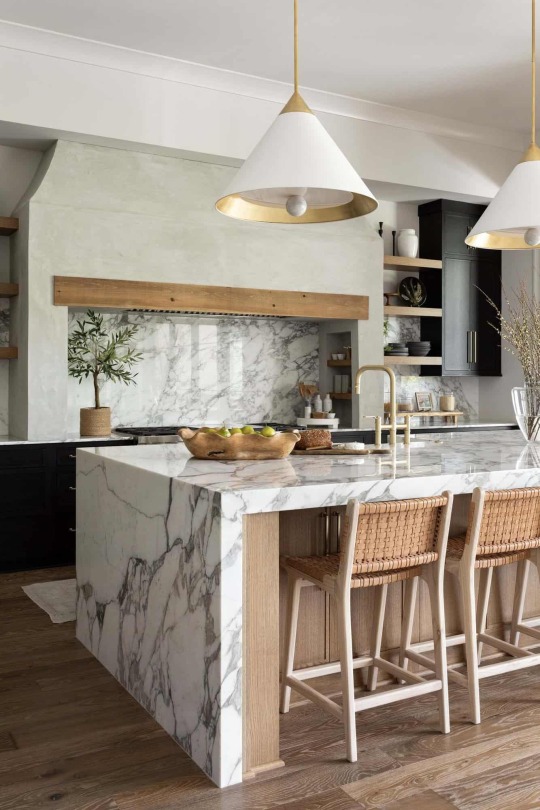
Making the Range hood the feature of the kitchen; using wood lintel beam - fits in well with this large kitchen.
99 notes
·
View notes
Text
In honour of Halloween I'm going to share a kind of spooky story I literally stumbled across. (Because why not!)
This is a story of local legends, strange old folk, my unhealthy obsession with death rituals, chimneys and uhh corpses.
Okay, let me set the scene.
I have a friend who had the wonderful privilege of growing up on an old Welsh farm. It's surrounded by fields and woodland, streams and lands. It's a complete maze. Very easy to get lost. One day we're going for a walk and her elderly dad joins us (along with their three dogs!) there are also two kiddos in tow. It's an expedition. The kids know where they're going (we think) and within seconds we're deep down the cwm, winding through trees, over the same(?) river multiple times. We go up and down and around and around, there's mud, sticks, water and chaos until we duck under the massive trunk of a fallen tree and come across the ruins of an old house deep in the woods.

(not the house, this is a different ruin but it's like this but more intact)
All four walls are still standing, there's no roof but you can clearly see the windows and the wooden lintel above the door is still intact, just about, and of course, there is a massive fireplace (it is rural Wales after all).
My friends dad is a man of few words and is very softly spoken and is essentially an 80 year old hippie (affectionate). He has spoken to me once in my life and that was to tell me about his dog. So, imagine my surprise when he leans in to say:
"This is the last house in Wales where they used to take the bodies up the chimney."
This actually isn't the most surprising thing I've ever heard in my life but I'll admit it took my brain a moment to catch up. But, I've been around the old places a bit and I had to write a paper on death rituals once so as far as I'm concerned there is no better way to start a conversation. I'm metaphorically rolling up my sleeves because this is New Information and this is my jam. So I'm like
"Oh, I've not heard that one before. I know there are some Welsh houses with special doors or like trap doors in the ceiling so people can get the coffins in and out but I've never heard of them using the chimney before."
And so he manages to tell me a little bit about how the smoke was purifying and about how the house was lived in until the 1950s by a little old lady and how big the chimney is - you know, the usual small talk, until one of the kiddos tries to eat an ivy leaf and runs off which brings the conversation to an abrupt and premature end.
Fast forwarding a bit, later on I mention this story to my mum thinking she might get a kick out of it being the last house of this type in Wales or something like that. Her reaction is instead:
*shocked gasp followed by hushed whisper* "I've heard of this... I read it in a book..."
Now, my mum is weird and she doesn't elaborate, just repeats the phrase 'i read it somewhere' again and again before I change the subject. And I don't think much else about it
But when I next see her (a few days later) not only has she remembered that I mentioned this, but she has brought the book! She hands it to me at the right page and fixes me with a bit of a look and says
"it's terrible..." and walks off.
The segment she's marked begins with the title: Night of terror in... and then the exact name of the little tiny hamlet where we are currently staying.
"Okay" I think, "that's a bit weird. What are the chances."
It's not enough to give me heebies though, the book is on ghost stories local to the area so it's kind of the done thing for each little area to get a shout out. So I begin reading and honestly I'm more hoping that it'll give me some info on why they thought exiting through the chimney was a good idea and what the purpose this served.
History time: So, it turns out this is a custom local to this area. (Oh, I think, that's why I haven't heard this one before!) It's linked to the gwylnos or wake night (which I have heard of - it's essentially a vigil) and this custom of taking bodies up the chimney is called called hirwen-gwd which literally means long white bag.
At this point I begin to get the tiniest heebie because I don't like mummies and bodies wrapped up in shrouds really creeps me out.
I ignore this and bravely soldier on to find out that it seems that the soul needed help escaping the body and the house where the person passed away. It wasn't uncommon for doors and windows to be left open to help the soul escape.
And the coffin actually plays a minimal part in this ritual because apparently the body is actually taken out of the coffin, and taken up... And then back down the chimney. Which was definitely not what I was expecting.
It then mentioned that this ritual was abruptly abandoned in 1760 following "a strange and terrible happening at a gwylnos"
A slight aside, it's worth mentioning that most Welsh customs (especially the historical ones) had a reputation for getting extremely rowdy. The Welsh make excellent beer and cider and any occasion is a great excuse to well... get pissed. Yes, even funerals. (As you can imagine this was extremely Frowned Upon by the puratins).
Okay so long story short, the custom mutated over the years and so, while they were taking the body up and down the chimney, someone had to lie in the coffin to stop the devil taking over. For reasons unknown the person who had to lie in the coffin had to be the person who was the most drunk. (It's a pretty extra drinking game, I'll give them that).
So, on this night in 1760, as the others go outside to see to the hirwen-gwd, a young man lies down in the coffin and the lid is placed back on. The others see to the ritual and generally have a "jolly old time." On completion of the ritual they untie the ropes and return inside, back to the coffin only to find that the young man inside is, himself, dead.
This both horrifies and terrifies the family to the core and news spreads through the community like wildfire. (God, imagine coming back from hauling your relative up a chimney to find someone else dead in their coffin... )
The cause of death remained unknown with some people saying he had died of shock after being confronted with the devil himself. So naturally nobody wanted to risk it and the custom was abandoned literally overnight.

(view over the valley at night - the house is technically in this shot)
So, I'm reading all of this and yeah it's pretty weird, but so am I, so the thing that I find the weirdest is that in this story they mention the house where this happened by name and let me tell you, that is extremely rare. You never get anything anywhere near so specific with these stories usually.
So I do what anyone else would do and start looking at old maps of the area to see if I can find where this house was. Did it even exist? Is it still standing? Is it nearby? Wouldn't it be funny if it was that house in the woods?
Well, it took a bit but I did eventually find the house listed on a map from 1850-1890 and to my genuine surprise, it is actually, honestly the ruined house in the woods that I visited with my friend the other day.
At which point her dad's words made much more sense.
At the time I thought he meant the last example of that kind of house where they would have done that ritual... not THE LITERAL LAST HOUSE where they had to stop the ritual because someone died!!!!!
Oh, and that lady still living in the house in the middle of the woods in the 1950s... Definitely a witch!
And there you have it, that's the story of how I accidentally visited the house that ended the tradition of hauling corpses up and down the chimney.
-----------------------
If you made it this far thanks for reading! Diolch yn fawr iawn, I hope you enjoyed a tiny slice of true Welsh history and lore 🩵
Also tagging @oldefashioned and @cantchangemypast because you might enjoy this story!
#Halloween#Folklore#Welsh folklore#Personal#Spooky stories#Strange stories#Spooky things for spooky people#Wales#Panic writing#TW death#TW corpse#TW grief
20 notes
·
View notes
Text
Snapetober Day 30: Ghost + Minvember Day 2: Scotland
This is a real folktale, very slightly modified, from Uist, Scotland. It was recorded by M. F. Shaw from the bard Seonaidh Caimbeul.
"Have we not celebrated enough? The pumpkins? The gory food? The costumes? What more do you want, headmaster?"
Albus took a seat next to Severus, settling himself in the armchair rather carefully as he was holding a teacup, full to the brim. He merely smiled.
"You did not even dress up, Severus. And I was thinking - what about ghost stories? It would be a nice way to finish the evening. Wouldn't it, Minerva?"
The Potions Master rolled his eyes. He was still standing next to his chair, his arms folded and a usual scowl on his face; those who knew him well, though, could tell, after scrupulous observation, that there was a hint of amusement in it.
He sat in the armchair next to him unceremoniously, as though he had been forced to and not merely - and very civilly - invited to join the group.
"I know one", Minerva replied, handing him a cup of tea with a cunning smile. "My mother told it to me when I was a girl. It is from Uist, I believe."
"Indulge us, Minerva", Severus muttered, accepting the hot beverage. "Albus seems to be in dire need of embracing his inner child tonight."
"And you should too, sometimes, my boy", the headmaster remarked humorously. "It would do you good."
"Now that sounds properly terrifying."
"Should I tell it, yes or no?" Minerva interrupted them, her eyebrow raised.
Her expression was very teacher-like. Albus Held up his hands apologetically.
"Pardon us, my dear. Do proceed."
Minerva put down her cup and cleared her throat, dusting her robes as she gathered her thoughts. Around them the staffroom was dark, save from the halo of light where they were sitting: it emanated from the fireplace behind them, and in it, the embers were dark red.
"There was a shepherd who lived in his father's cottage, on the high slope of Beinn Mhòr. He had a wife and a daughter, and the daughter was deaf and numb. His father was a very old man of a very evil temper, and one night he fell ill, and died. So the husband and his wife placed him in a bier, and the shepherd set out to town to bring back people to help him carry the body. The mother, with her little child, sat next to the fire in silence."
In the fireplace, a piece of wood, almost entirely consumed, fell from the burning pile with a thud.
"Suddenly, the mother heard the corpse move. And so the child looked up and spoke her first words: "Grandfather is rising. He will eat you; but he won't touch me."
Albus cast her a horrified glance.
"The mother caught the child and fled to the nearest bedroom", Minerva continued, "and she bared the door with everything she could find. The corpse rose and came to the door, and he began to dig away the earth under the lintel with his white hands. The mother and her girl saw his fingers, then his arms, then his head appear - but at this moment the cock crew and he led completely still."
At this point, even Severus had stopped sipping his tea.
"The corpse was there until the shepherd came back with men from the village and lifted him back onto the bier. The mother and child watched as he was pulled below the door, his horrible smiling face disappearing last. They buried him in a graveyard on the north side of Loch Eynort, at a place called An t-Uchd uidhe. There is a hole where he is buried, and you can still see it to this day."
Then, with a content smile and innocent countenance, Minerva picked up her teacup, humming softly while both her colleagues stared at her with their mouths hanging slightly open. Their own tea was long forgotten.
"That's your children's ghost story?" Severus finally said, pulling himself together. "That's the kind of bedside story your mother told you as a child?"
Minerva smiled facetiously.
"That's the Gaelic spirit for you, dear", she replied in an angelic tone.
"He will eat you, but he won't touch me?"
Albus still had not spoken. The Potion Master, turning his head slightly, glanced at him quickly. Then, turning back to Minerva, he said ironically:
"If he cannot sleep tonight and ends up knocking on your door, that is on you and the Gaelic spirit."
#severus snape#pro snape#minerva mcgonagall#albus dumbledore#harry potter#snapetober#snapetober 2023#minvember 2023#minvember#minerva fest#ladies of hp
53 notes
·
View notes
Text
Cosmic Chaos
Chapter 1

SCOTT MACCALL HOUSE 🏡
Scott McCall is sitting on his bed in his room, wearing only a pair of gym shorts, as he re-threads the laces on his lacrosse stick. Once he's determined that the net on his stick is secure and loose enough, he tosses the stick on his bed before walking toward the bathroom door, where he has a bar mounted on the lintel. After doing a series of chin-ups, Scott goes into the bathroom, where he brushes his teeth and washes his face before bed.
Suddenly, Scott hears a noise outside and pauses to listen for danger. The scene cuts to the front porch, where Scott, now in a red hoodie, walks outside with a wooden baseball bat in hand as he investigates what is causing the noise. Suddenly, a figure appears hanging from the roof, and Scott yelps in terror, almost hitting the person in the face with his bat until he realizes that it is Stiles Stilinski, his best friend, who is yelping just as loudly.
scott and stiles simultaneously scream "AHH! AHHH! AHHHH!"
Scott huffs in frustration and annoyance before lowering his bat" Stiles, what the hell are you doing?"
Stiles looks just as exasperated as Scott as he eyes the bat in his best friend's hand.
" You weren't answering your phone! Why do you have a bat?"
scott annoyed look at him "I thought you were a predator"
stiles " pre... Wha?" Stiles looks at Scott, clearly appalled by the implication, before scoffing and changing the subject to why he's there
stiles "Look, I know it's late, but you gotta hear this. I saw my dad leave twenty minutes ago. Dispatch called-- they're bringing in every officer from the Department, and even state police."
scott frowns "For what?"
Stiles has difficulty concealing his glee regarding his answer" Two joggers found a body in the woods."
Reaching up to pull himself free of the trellis, Stiles lands on his feet in front of Scott, who still looks confused
"What, a dead body?" scott asked
Stiles reaches up and leans on the railing to look at Scott at eye-level with a sarcastic expression.
"No, a body of water." Stiles rolls his eyes "Yes, dumbass, a dead body!". Scott looks unnerved about this news as Stiles climbs over the railing to join him on the porch.
" You mean, like, murdered?"
"Nobody knows yet. Just that it was a girl, probably in her twenties."stiles reply
Scott's confused " Hold on, if they found the body, then what are they looking for?"
Stiles becomes overwhelmed with glee at the drama of this situation as he finishes the story
" That's the best part-- they only found half."Stiles' tone of voice changes, making it clear that Scott doesn't have a say in what happens next "We're going.'
" i guess i don't have a choose " scott murmured as he and him walk toward stiles Jeep " but we are not bringing y/n into this bonnie already giving me dead eyes " scott glance at stiles
stiles give scott sheepish look and scott let out a sigh " she is in the jeep right "
right on que you got out of the jeep and walk towards them. " Hey guys are you ready for haunting for the half body and if we find a nightmare for rest of the life "?
stiles enthusiasticlly node where as scott roles his eyes with small smile on his face .

THE WOODS 🌳🌳
The trio pull into the preserve in Stiles' teal blue Jeep, illuminating the sign warning against entry after dark with the Jeep's headlights. Stiles gets out with a flashlight in hand. Scott and follows, hurrying to keep up with him as the walk in the dark woods.
"We're seriously doing this?" y/n ask.
Stiles look back at you "You're the one always bitching that nothing ever happens in this town."
" I was trying to get a good night's sleep before practice tomorrow" scott whine.
"Right, cause sitting on the bench is such a grueling effort. "Stiles reply snidely.
" No, because I'm playing this year. In fact, I'm making first line."
" That great scott" you exclaimed knowing how much he wanted to play he smile at you as you and scott walk side by side.
Stiles looks back at Scott in disbelief " Hey, that's the spirit! Everyone should have a dream, even a pathetically unrealistic one."
you shake your head at his remark being used to it. it was really cold, and you regret not having your jacket.
you rub your arms and Stiles seeing this give you, his jacket. (Outfit)
" thanks " he gives you boyish grin return ears turning pink.
scott nudge your shoulder " how did you sneak out without waking your sister and grams?"
" I know crazy right " you let out giggle and boys have a small laugh with you.
"Just out of curiosity, which half of the body are we looking for?" scott questions Stiles.
Stiles looks somewhat sheepish in response to this question "Huh! I didn't even think about that."
you look at him with worried face " And, uh... what if whoever killed the body is still out here?"
Stiles looks embarrassed " Also something I didn't think about."
Scott rolls his eyes in amusement as the three start to hike up a hill
" It's comforting to know you've planned this out with your usual attention to detail." you comment.
" I know."
Scott's breathing starts to become rapid, shallow, and wheezy as the three continue up the hill, with Scott struggling to keep up with Stiles quick pace. you slow your pace and walk with scott again.
scott start to gasping "Maybe the severe asthmatic should be the one holding the flashlight, huh?"
" where is your inhaler scott ?, you brought it with you right " you ask him touching his shoulder making him stop walking
"yeah I did "Scott leans his back against a nearby tree as he pulls his inhaler out of his pocket.
"Stiles wait for a second " you shout at him.
" keep up shortcake " he remark at you and you growl at that nickname.
However, when Stiles keeps pushing on, Scott and you continues to make his way up the hill after him. When they see a handful of people ahead of them waving flashlights around as part of the search, you three dives behind a large fallen tree branch as they plan their next move, turning off the flashlight so they don't attract attention. Unfortunately for them both, Stiles' impatience eventually wins out, and he whispers back to Scott and you as he jumps up and runs toward the action.
" Wait!" you and scott simultaneously whisper.
" Come on!" you urge scott Scott quickly takes a hit from his inhaler before scrambling to catch up with him. He tries his best to call after his best friends without also alerting anyone else that they are there.
"Stiles! Stiles!"
Stiles finally hears the last attempt to call his name, but the split second of distraction caused the nearby K9 officer to start barking at him, scaring him so much he falls backwards onto the ground. The deputy with the search dog immediately points his flashlight at Stiles as he tries to recover from the shock.
" Hold it right there!" the deputy ordered.
Stiles puts his hands up while Scott and you, several meters behind him, hides behind a nearby tree, just then, another male voice is heard-- it is Noah Stilinski, Stiles' father and the Sheriff of town.
"Hang on, hang on..."Stiles stands to his feet, shielding his eyes from the bright flashlight held toward him by the deputy.
sighs Noah sighs "This little delinquent belongs to me."
Stiles, trying to play it cool, greets his dad warmly "Dad, how are you doing? Stilinski looks at Stiles with a mix of frustration, exasperation, and exhaustion.
"So, do you, uh, listen in to all of my phone calls?"
Stiles laughs sheepishly " No. Heh..." Stilinski gives Stiles a look, and Stiles finishes his sentence ". Not the boring ones."
Stilinski just sighs and nods as though he's accepted this truth about his son before looking around the surrounding area " Now, where's your usual partners in crimes"?
Stiles immediately tries to play dumb as it starts to rain "Who, Scott? and y/n, Scott's home. He said he wanted to get a good night's sleep for first day back at school tomorrow and y/n need a good sleep you know how she gets when she didn't get enough sleep grumpy like little chipmunk. "
Stilinski looks at Stiles in disbelief as he continues to lie" It's just me... In the woods... Alone..."
It is obvious that Stilinski doesn't buy what Stiles is saying, and he lifts his flashlight and tries to get a look around to find Scott and you , who is still hiding behind the tree.
" y/n , Scott, you out there? Scott?.y/n i won't be mad at you come out it's dangerous out there "
After a moment, when Scott or you don't materialize in front of him, Stilinski reluctantly determines that Scott and you isn't with Stiles after all. He then sighs before grabbing Stiles roughly by the back of the neck and steering him toward the entrance to the preserve.
"Well, young man, I'm gonna walk you back to your car... And then you and I are gonna have a conversation about something called "invasion of privacy." Noah said.
As Stiles and the Sheriff leave, Scott and you waits until the coast is clear before heading in the opposite direction through the woods.
"And now we lost our ride to home isn't that amazing" you state.
scott wrap his arms around your neck " come on shortcake we can walk home just fine " and start to walk.
Thunder and lightning flickers overhead as Scott and carefully make their way back, pulling up the hood to his sweatshirt to try to keep his head dry from the steady rain and he does the same you. It's evident that he's unnerved by the sounds of the forest animals around him, but when he makes it to a foggy clearing, he becomes unnerved by the fact that it falls totally silent.
you start to feel like you and scott being watched and an uncanny feeling settle in your heart.
"why is everything is so quiet scott"
" yeah, we should just move quickly."
He pulls his inhaler out of his hoodie once again and shakes it, intending to take another hit when suddenly, a herd of deer begin frantically stampeding toward him and you. Scott covers you his arms as trampling you both over and causing his inhaler to fly several meters away.
Once the deer have cleared out, Scott, still in shock.
"are you alright y/n ? " scott ask as he help you stand
"yeah I'm good . you okey ?" you glance at him
" yeah , i think i lost my inhaler "
you and scott starts looking for his inhaler using his cell phone as a light source. He's about to search through a pile of dead leaves when he's startled when he instead uncovers the top half of the body that Stiles had told him about-- young, white, with dark hair and very clearly bisected at the waist.
The shock of this sight stuns him so badly that he loses his balance and tumbles down the hill behind him and into a ravine.
you shout his name and move towards him and help him stands to his feet with a groan.
"i think we just found the bodie and hurt my leg "
you loop his hands on your shoulder " yeah,I can't wait to throw that on Stiles face .hold on to me don't put pressure on your leg "
you and Scott makes his way quickly through the woods, wanting nothing more than to get out of there as soon as possible, when all of the sudden, a growl heard from behind causes you two to freeze in fear. you grab his hand tight as his grip on your shoulder tighten. slowly turning around, only to find a large, bestial wolf with glowing red eyes standing before your eyes.
barely has time to gasp before the beast leaps toward him and he push you away causing him to fall backward onto the ground. Though Scott attempts to crawl away, the wolf grabs him by the ankles and pulls him backwards before viciously biting him on his right hip, causing Scott to roar in pain. you not knowing what to do scream his name.
you move toward Scott grabbing on his arms pulling you toward him desperately trying to evade whatever biting him. it pulls him backward before biting him on his right hip.
you scream his name before using all your strength and pulling him towards you successfully freeing from the creature.
you grab his wrist and start to run down the hill avoiding the tress Infront of you finally makes it to the nearest road, you both stops just before being hit by someone driving a burgundy SUV, who manages to swerve away from him and you just in the nick of time.
"What was that thing? " You ask after some time.
"whatever it is hope it won't come near us again"
Scott trie to lift his hem of hoodie before hesitating.he look at you with fear in his eyes you cover his hands giving it a squeeze before lifting it .
you let out a gasp at large bite wound on his hip with horror as the rain continues to pour down.
you let out a Shakey breath "it's not that bad we can fix it "
" yeah "Suddenly, a loud wolf howl is heard from in the woods, which only makes Scott more concerned. "Come on we have to go "

THE BENNETT HOUSE 🏡
bonnie get her room and start to walk towards the kitchen and she was surprised to see you awake.
"wow didn't know you could wake up this early "
grams laugh at that " I know right she was making breakfast when I come down. I couldn't believe my eyes " bonnie and grams laugh, and it was refreshing to hear them laugh it was nice moment.
" Wow grams teaming up with my witch sister and humiliating me, now I know who is your favorite grandchild" you remark with false hurt face clenching your heart.
grams and bonnie roll their eyes at your antics you give bonnie her breakfast and refile grams coffee and grams lean in and whisper " you're my favorite grandchild" you give her thumbs up and grin. bonnie watches this with a shake of her head.
when you start to say something, but it's was cut off when you see the news.
THE COUPLE DARREN AND BROOKE WAS MISSING FROM LAST NIGHT.
grams sees that you were not saying anything, and she also turn to the news and look back at you.
"y/n do you want me to drop you off today " bonnie ask even though she knows the answer.
"nah I'll come my own " you answer with out looking at her .
"then I'm off I have to pick up Elena see you in class " bonnie start to look for the keys
" hey " you call and she look back at you "if you need me just text me okey " you tell she look at with amusement in her face but when she see your serious worried look she node at you .
" I will " she smile at you
"here catch " you throw the key at her .she skillfully catch it before waving to you .
"bye grams love you ,bye y/n "
"bye bonnie love you too. " you say in grams voice another brust of laughter afterwards.
grams watch this with warms smile on her face "you're silent " she tells you and you look at her puzzled "you're silent sometimes but now you're tense and worried. "
you give her smile " how do you do that?"
"Because you're my grandchild and I know you "
you let out sigh before running your hands through your hair "something doesn't feel right. I feel like something going to happen. "
"honey, all I ask you to do is do what you feel right and trust your gut everything going to be fine " .
"yeah "

IN HIGH SCHOOL 🏫
"Okay, let's see this thing." Stiles said as you walk towards them. Scott lefts up his shirt to show Stiles his bite wound, which is covered with gauze and tape that has a small amount of blood leaking through.
Stiles pokes the bandage, which causes Scott to flinch in pain.
"Whoa!" you hit Stiles on his arm.Scott pulls his shirt back down as the trio resume their walk into the school
" It was too dark to see much, but I'm pretty sure it was a wolf. "Scott tell Stiles and Stiles looks at Scott and you with disbelief.
"'A wolf bit you ? and you believe it also ?"Stiles look at you
"yeah it's true "
Stiles shakes his head and gives him a look that says he thinks Scott and you is being dense." No, not a chance."
" we heard a wolf howling." you add
Stiles scoffs and continues to shake his head in response to Scott's argument
"No, you didn't."
"What do you mean, "No, I didn't?" How do you know what we heard?" Scott asks frustrated.
"Because California doesn't have wolves, okay? Not in, like, sixty years."
Scott looks surprised by this news as the two stops on the staircase and you shrug your shoulder. Stiles turns around to face Scott with a serious expression.
" Really?" Scott asks as he look between the two of you.
"Yes, really. There are no wolves in California."
"All right. Well, if you don't believe me about the wolf, then you're definitely not gonna believe me about when I tell you I found the body." you tell Stiles and
Stiles' demeanor instantly changes from exasperation to gleeful at the sound of this news
" You-- are you kidding me?"
"No, man, I wish. I'm gonna have nightmares for a month."Scott shuddered at the memory.
" Oh, god, that is freakin' awesome. I mean, this is seriously gonna be the best thing that's happened to this town since--"
Stiles loses his train of thought when he sees Lydia Martin, walking up the stairs toward the school, and abandons his train of thought in favor of trying to catch her attention " --Since the birth of Lydia Martin. Hey, Lydia! You look--"
Lydia continues to walk right past Stiles and when she sees you, she grabs your hand and drag you away from the boys completely oblivious to the fact that he was talking to her.
"--Like you're gonna ignore me..."
Stiles looks back at Scott with an irritable expression "You're the cause of this, you know."
Scott rolls his eyes in response to this comment "Uh-huh."
" Dragging' me down to your nerd depths. I'm a nerd by association. I've been Scarlet-nerded by you." Stiles and Scott walk towards class.
" He was trying to talk to you know " you tell Lydia as you walk to your first class. you see few new faces with familiar ones giving them a smile along the way.
" Yeah, I could see one your boyfriend talking no stop. "
" They are not my boyfriend Lydia how many times do I have to tell you "You give her deadpan look.
"Could have fooled me. "
"I know you have boyfriend but Stiles like you heck maybe loves you give him chance at least acknowledge him " you plead at her
she stay silent for a minute " you look great today, I love your outfit
you shake your head at her before going to class with Lydia.
Scott and Stiles enter their first period chemistry class and take their seats, where the teacher, Mr. Curtis, immediately begins the lecture without introduction.
"As you all know, there indeed was a body found in the woods last night."
Scott grins and looks over at Stiles and you as you sat at each other's side.
"And I am sure your eager little minds are coming up with various macabre scenarios as to what happened. But I am here to tell you that the police have a suspect in custody, which means you can give your undivided attention to the syllabus, which is on your desk outlining this semester."
Scott's locker is across the hallway and several meters down from Allison's, and when Scott catches her eye, Allison smiles at him. Just then, Lydia and you approaches Allison and strikes up a conversation, and Scott continues to watch them from afar and eavesdrop on them with his newly enhanced hearing as Stiles and their friend Harley join him by his own locker.
" That jacket is absolutely killer. Where'd you get it? "Lydia ask.
" it's look good on you my name is y/n and this Lydia by the way. "
" My mom was a buyer for a boutique back in San Francisco. I guess you guys already know my name. "
"And you are my new best friend." Lydia exclaim
Just then, Jackson, Lydia's boyfriend, joins them as well. Lydia greets him warmly as he puts his arm around her waist, though it makes Allison, and you feel uncomfortable " hey ".
"Hey, Jackson." Lydia greet him .
he turns to you "looking pretty good y/n ,new girl " shooting you both a wink . you and Allison share a knowing glance as Lydia look apologetic.
Jackson and Lydia share a kiss. Meanwhile, across the hall, Harley, who is also watching the scene go down in front of them, looks at Scott and Stiles incredulously, though Scott is too busy listening to you, Allison, Lydia, and Jackson's conversation to hear her.
" Can someone tell me how New Girl is here all of five minutes, and she's already hanging out with Lydia and y/n "harley ask
Though Harley was obviously being facetious, Stiles replies with a genuine answer"Because they are hot."
Harley gives him a look, but Stiles still doesn't get it and shrugs before finishing his thought "Beautiful people herd together, three very beautiful people."
" you just told y/n is hot and beautiful " Scott glance at Stiles.
Stiles eyes widen at this " please don't tell her she already has ego twice as her size "Scott only laugh at him.
"So, tomorrow there's a party." Lydia state
"A party?" Alison asks see glance at you.
"Are we really having a party when there was recent murder and not one but two missing persons out there " you cross your arms over your chest.
"Yeah, so what about it don't be so uptight y/n learn to have fun. You both should come." Jackson added.
I will have fun when I punch you in the face you whisper but Scott hears this and let out laugh at his sound you look at him and he wave at you as you smile at him.
Allison looks slightly bashful when she replies "Uh, I can't. It's family night and I don't my dad would agree as y/n said I'm certain it would tough luck. Thanks for asking."
Lydia and Jackson both look disappointed by this response. Meanwhile, Harley and Stiles have a very animated debate going on. you baid your goodbye to them before going to the boys.
" hey " you greet them Stiles who did see you coming let out Yelp at your sudden presence ." what you doing beside staring at the new girl with creepy eyes " you ask Scott .
he role his eyes at you and hook his arms on your shoulder " it's not creepy and do you think she'll go out with me if I ask her "
you break into wide smile " Maccall having a crush on the new girl "
" with the look that he is giving her i think he might me in love " Stiles answer as he come up your other side.
"not in love but you know just give it a chance " Scott smile cutely
" well i think she would love to go out with you i can tell she also have a eyes on you " you give him a pat on his chest .
"did you hear there is new hot guy in school apparently every girl is in daze " harley ask you
"ahm no " you answer
"you should get know him you need to get away from these guys some time " harley laugh at Stiles shocked face .
Stiles wrap his hands around your head and bring you to his chest " hey don't corrupt my short cake like that" and you fruitless try to get away from him .
"really Stiles " Scott shake his head .
you all go to your next class as you and the boys walk in you do see the new guy and Stiles and Scott see you and new guy node and stiles put his hands on your eyes and Scott guide you to back seat .
" are we really doing this "
Scott and Stiles simultaneously say yes and you just go with it .
" hey bonnie " you and boys greet her at the time make you three look at eachother .
"we have been doing that alot lately " you take a seat and Stiles sit in your front and Scott in back as bonnie is at your side .
" well you what they say great mind think alike but i don't about Scott " Stiles give grin .
" can you not " Scott whines
you hit him in his head " be nice Stiles " .
" hey we are going to the grill this evening do you guys want to come after lcacorees " bonnie ask .
" yeah " you agree before turning to Stiles and Scott " what about you guys? "
" but we have the thing right " Stiles look at you and Scott and bonnie throw a suspicious glance at you .
" what thing?" she question you and Scott look confused glancing at eachother .
" the thing we did last night " Stiles look annoyed that you and Scott didn't understand him yet .
bonnie eyes widen " you were out last night "
"no she wasn't" they say
"no i wasn't" you reply she narrow her eyes at you thankfully the teacher comes in .
"Once our home state of Virginia joined confederacy in 1861, it created a tremendous amount of tension within the state. People in Virginia's northwest region had different ideals than those from the traditional deep south. Then Virginia divided in 1863 with the northwest region joining the union" tanner start the lecture
you were already bored out of your mind Stiles taking note as usual you glance at Scott and he look like he ready to fall asleep at any moment .
you tug Stiles flannel shirt lean in to whisper " did you see the missing persons news last night "
" yeah " he whispered back before he say anything
Scott tug your hair " what is it ?"
"two people gone missing last night "
Scott frown " last night? "
" would you like to share that with the class miss Bennett ?" tanner ask
"which one ?" you ask innocently as bonnie give sheepish smile and Scott and Stiles snort
"i think we both know who I am asking to "
you stay silent for second " no thank you "
" I'm letting it's slide because it's the first day " he continues to teach.

THE WOODS 🌳🌳
you ,Scott and Stiles have just crossed the creek in the nature preserve as they attempt to find both the top half of the body Scott found the night before as well as the inhaler he dropped in the process. The three are talking about the day's practice as their feet get wet in the water
" I-I don't know what it was. It was like I had all the time in the world to catch the ball. And that's not the only weird thing. I-I can hear stuff I shouldn't be able to hear. Smell things." Scott tell
"Smell things? Like what?" you ask as you carefully walk without falling.
" Like the mint mojito gum in your pocket." Scott point towards Stiles pocket
Stiles makes a face as though he thinks Scott is crazy
"I don't even have any mint mojito--"
Stiles checks the inner breast pocket of his blazer and finds, much to his and your surprise, that there is a single piece of folded-up mint mojito gum, just as Scott sensed.
Scott turns to you " and you smell like fresh vannila and coffe it's nice how do smile like that ?"stiles try to sniff your hair but you slap his hands away he let out small ouch .
" back off mister " you start to walk ahead .
Scott raises both of his arms to the side as if to say, "I told you so."
"So all this started with the bite?"
Stiles seems to find this intriguing, while Scott, ever the nurse's son, is concerned that something is wrong with him
"What if it's like an infection? Like, my body's flooding with adrenaline before I go into shock or something?"
you turn to see stiles gets a small smirk on his face before trying to make himself look as serious as possible, which Scott, who is walking in front of him, doesn't catch " You know what? I actually think I've heard of this-- it's a specific kind of infection."
"Are you serious?" Scott ask afraid.
" Yeah. Yeah, I think it's called lycanthropy."
" really Stiles?" you close your eyes
Scott, still not realizing that Stiles is messing with him, starts to panic
"What's that? Is that bad?,y/n ???"Scott look at you with troubled face .
"Oh, yeah, it's the worst. But only once a month."Stiles still continue his act .
" no Scott he is messing with you , you're fine " you pich Stiles arm " stop scaring him "
" Once a month?" ever the confused Scott ask
" Mm-hmm. On the night of the full moon. Aroooo!"
Stiles fake-howls like a wolf, and Scott, annoyed, shoves him away, causing Stiles to giggle in amusement
" Hey, you guys are the one who heard a wolf howling!" Stiles state
Scott stops walking and look" No, I-I could have sworn this was it. I saw the body, the deer came running. I dropped my inhaler..."
" Maybe the killer moved the body?" Scott and Stiles look around as you walk towards the place where you saw the body .
"If he did, I hope he left my inhaler. Those things are, like, eighty bucks."
" ahem guys " you call as you turn to them and they stop searching and look at you " the bodie gone someone must have moved it "
"What are you doing here?" a voice from behind you ask making let out a gasp before turning to the voice
a man in his early twenties with pale skin, black hair, a black leather jacket, and a scowl appears in front of them
he is towering over you and you take a step when no one answer he narrow his eyes at you.
Scott and Stiles, both of whom are visibly panicking as you are infornt of the stranger and they at safe distance when no one responded the man's tone gets even gruffer
" Huh? This is private property." he look back at Scott and Stiles before glancing at you . slowly Scott and Stiles come closer to you
" Uh, we're sorry, , we didn't know." you said and start to step back slowly he seems to be amused by this
his attention is shift on Scott, who picks up where you left off to try to relieve the tension and stiles pull you by your wrist when you reach them
"Yeah, we were just looking for something, but..."
Scott was about to continue until Derek glares at him, after which point Scott loses his nerve and drops the subject
" his inhaler we lost it , it's expensive" you continue he glare at you now " but we can buy a new one right ?" you turn to look at them as they now stand either side of you and they node
Suddenly, Derek tosses Scott's inhaler at him before turning and heading back the way he came without a word, giving Scott and you one last look and seemingly paying Stiles no attention whatsoever. Scott sighs and gets ready to turn back the opposite direction
" Um... All right, come on, I gotta get to work."
Before Scott can move, Stiles holds him his hand to physically stop him from walking away
" Dude, that was Derek Hale! "
When Scott looks at Stiles blankly, Stiles' expression becomes incredulous
your eyes widen at this " wow he is back in town now "
Scott glance at you " you know him ?"
"no but his family died in fire ten years ago I wonder why he is back though nothing good come out of it " Stiles state
" hey be nice he lost all his family " you glance back at where he gone before you all walk away .

Masterpost
#teen wolf#tvd x teen wolf#tvd x reader#derek hale x reader#scott mcall x reader#stiles stilinksi x reader#bonnie bennet#damon salvatore#stefan salavatore x reader#elena gilbert#elijah mikealson x reader#klaus mikealson x reader#kol milkealson x reader#rebekah mikaelson#cosmic chaos#aloneatpeacefic#reader insert#alison argent#chris argent#peter hale#lydia martin#bannshe#werewolf#vampire diaries x reader#tee wolf x reader#issac lahey#void stiles#beacon hill#caroline forbes#fic.cc
175 notes
·
View notes
Text

Eastern Red Cedar (Essential Herbs for Witches)
*Notes from the Hekate ritual kits that were released October 23'.
Latin name: Juniperus virginiana
Planet: Sun, Saturn
Element: Fire
Parts used: foliage, wood, essential oil
Astrological Association: Leo
Energy: Masculine
Magical properties: Longevity, protection, preservation, strength, wisdom, perseverance, renewal, transformation, balance, connection to the divine through nature, return of stolen goods, defense.
Healing properties: Fever, cough, skin conditions, respiratory issues
Eastern Red Cedar is not actually a true cedar, it’s a juniper, as its latin name, Juniperus virginiana, indicates. Naturalized in Europe, Asia, and North America, Eastern Red Cedar is present in all temperate regions of the northern hemisphere and stretches into parts of the southern hemisphere. This hardy tree has deep roots and tolerates poor rocky soil, salt, heat, and wind, and is drought tolerant.
Medicinally juniper has been used in bathing, sometimes as a scourge, to alleviate rheumatoid arthritis and to relieve depression symptoms and exhaustion. It’s also been used to heal open wounds. Juniper is warming and pungent and affects the liver and kidneys. Its bitter action stimulates the gallbladder and liver and it aids in digestion. Juniper is also used for respiratory issues, urinary tract infections, and skin ailments like psoriasis and eczema. The warming effect of juniper makes it helpful in breaking fevers. Eastern red cedar is an abortifacient and should not be used by pregnant women.
Juniper berries have been used to flavor food, beer, and notably gin, and in Ireland the unripe berries are tinctured with whiskey and used as a general health tonic.
As for juniper’s use in folklore and witchcraft, around the Mediterranean and Aegean seas, it was planted to protect a home from evil spirits and malicious men. It was sometimes built into a new house as a structural beam or to fill cracks between stone to drive away illness and evil spirits. Branches were hung above doors to repel witches.
Because it is an evergreen, it’s also used in fertility rites and the berries are sometimes used as an aphrodisiac.
Shamans in Siberia burned and inhaled the smoke of juniper to induce trance, and because of its high thujone contain, it can indeed induce altered states. Thujone does build in the liver over time so care should be taken to limit smoke inhalation to occasional use.
Burning juniper as a smudge was common in Native American rituals for purification and to cleanse sacred ritual space. Cherokee natives believed that the wood of this cedar held the spirits of their ancestors. In other native ritual practices, it was believed that messages were sent to the Creator when it was burnt ceremonially.
In Scottish folk magic, juniper is used to ‘sain’ livestock and homes during Beltaine and Samhain. Saining is done by lighting bonfires and driving cattle between them. These fires would be lit from sacred Neid fires and extinguished home fires would be relit with this fire. People also hopped over these fires to rid themselves of negative spirits. Juniper (lubhar beinne) was used, and to a lesser extent, mountain ash or rowan (caorran). The cattle byre was sained, and the lintel over the byre was anointed with wine or human urine. Homes were also sained with burning juniper and “in such quantities to fill the whole house with smoke.” Juniper would have also hung at windows to ward off witches and evil spirits and to rid the house of pests and diseases.
According to Scottish folklore, juniper needed to be harvested in a particular way, like all magical plants. It was pulled by the roots, taking 4 branches between 5 fingers while an incantation was repeated. Today we should probably refrain from yanking bushes from the ground and taking a branch or some berries after asking permission should suffice. The branches can be dried and burned or the berries can be burned on a charcoal disc, or dip the branch into sea salted water and sprinkle a bit on yourself and your magical working space.
While we generally think of juniper as a plant of the Sun, it does have older Saturnian associations perhaps because they are very long lived, but maybe also because of their often gnarled wood and spiky foliage, giving them a dark, ominous aspect. Like both yew and cypress trees, Easter red cedar is common in older cemeteries in the southern united states. This may be because its evergreen leaves have come to symbolize ‘eternal life’, but through the ancient Greeks, we have an association with juniper as a plant of Hekate, perhaps because she led the procession of the dead. Through Hekate, it is also associated with Medea, a Hekatean priestess.
I choose to substitute Eastern red cedar for the yews, cypress, and cedar we traditionally see aligned with Hekate because ERC happens to grow in abundance in my bioregion and has a long history of use in sacred rites across the world. Eastern red cedar is a plant of protection and is excellent for banishing, inspiring courage and strength, purification and release.
19 notes
·
View notes
Text

Vermilion Torii of Shirahama Shrine: Gateway to the Sacred
Location: Shirahama, Shimoda, Shizuoka, Japan Timestamp: 07:43 on January 3, 2024
Fujifilm X100V with 5% diffusion filter ISO 3200 for 1/140 sec. at ƒ/8.0 Film simulation: Velvia/Vivid
A torii gate is a formalized gateway arch signifying entrance to a sacred area. Shrines may have one or more torii, such as here at Shirahama Shrine, where there are at least three. When multiple torii are present, the largest one is normally called the “Ichi-no-Torii” (first torii gate) and stands at the sando or approachway to the shrine grounds and courtyard.
Torii may also be found at various points within the precincts of the shrine to indicate increasing levels of sanctitude as one approaches the (本殿・honden), which is often located farthest from the entrance of the shrine grounds and behind the worship hall (拝殿・haiden).
Based on their present-day function, torii express the division between the profane and sacred realms. They are found not only at shrines but also at Buddhist temples, as seen in the famous stone torii of the temple Shitenno-ji in Osaka. However, when used as a map symbol, they generally signify the presence of a Shinto shrine as opposed to a Buddhist temple.
With the rise of Buddhist-Shinto syncretism in the 12th century, Shinto shrines began to appear within the grounds of Buddhist temples. Even then, torii were used to mark the entrances to such shrines. The origin of torii is unclear. In the writings of “The Inventory of the Properties of Otori Jinja in Izumi,” dated 922, there are references to torii that lead some scholars to propose that torii originated in Japan.
Regardless of the origin, torii in Japan share mostly similar basic designs with two upright posts topped by a horizontal cap beam (笠木・kasagi) that extends beyond the posts on either side. Beneath the kasagi, a horizontal tie beam (貫・nuki) is laced around the uprights and links them together.
Among the infinite variety of torii named for unique characteristics or the name of a specific shrine itself, basically all torii can be classified under two major categories: those with straight members, shinmei torii (神明鳥居), and those with curved members, myojin torii (明神鳥居).
The main torii of Shirahama Shrine, as seen in my photo, most closely resembles a myojin classification based on the following observations. See if you can identify these same specifications in the photo!
The top lintel (笠木・kasagi) has a strong upward curve.
The ends of both the top and secondary lintel (島木・shimaki) are cut with a downward slant.
The tie beam (貫・nuki) is straight, rectangular in section, and secured by wedges (楔・kusabi) inserted into each side of the pillars.
A strut covered with a framed inscribed panel (額束・gakuzuka) is attached at the center between the secondary lintel and the tie beam. (The inscription panel in my photo reads “白濱神社・Shirahama-Jinja or Shirahama Shrine in English.)
Finally, myojin torii can be made of stone, wood, or concrete or PVC (in the modern period) and are painted vermilion, although I have seen a few painted black.
For anyone interested in reading more about the different types of torii gates, I have provided links to reliable sources in my latest pix4japan blog post: https://www.pix4japan.com/blog/20240103-shirahama
16 notes
·
View notes
Text










Yellowknife, NWT (No. 14)
In the middle of the three front bays on the east (front) facade is a door of vertical flushboard in a plain wooden surround, with rusted metal strap hinges; a wooden screen door is behind it. It is the only entrance. A horizontal sign above the lintel says "Fireweed Studio". To its south is an interpretive plaque.
Both sides have windows in the second and fourth of their five bays covered by locked vertical flushboard shutters similar to the door when the building is closed. The rear is completely blind; a modern electric meter is affixed to it near the southern corner. A narrow plain wooden frieze on narrow eaves marks the roofline. The roof itself is covered with asphalt shingles.
Fireweed Studio is located along the west side of 49th Avenue between 52nd and 53rd streets, at the eastern edge of the small Somba K'e Park. On the north side of the park is Yellowknife's modern brick city hall. An open expanse of grass to the west descends via a series of terraces with concrete retaining walls to a concrete tiled walkway at the edge of Frame Lake. South is a curved parking lot and wooded parkland. Across the street are residential properties amid parking lots with some mature trees along the edges, buffering the neighbourhood from the denser development and high-rises along Franklin Avenue, the city's main street, a block to the east.
The building itself is a one-storey log cabin slightly rectangular in shape, with a few small trees, mostly white spruce, at the sides and rear. It sits on a concrete foundation and is topped with a front-gabled roof pierced in the centre by a small modern chimney. The logs are stained brown and form saddle joints at the corners.
In the middle of the three front bays on the east (front) facade is a door of vertical flushboard in a plain wooden surround, with rusted metal strap hinges; a wooden screen door is behind it. It is the only entrance. A horizontal sign above the lintel says "Fireweed Studio". To its south is an interpretive plaque.
Both sides have windows in the second and fourth of their five bays covered by locked vertical flushboard shutters similar to the door when the building is closed. The rear is completely blind; a modern electric meter is affixed to it near the southern corner. A narrow plain wooden frieze on narrow eaves marks the roofline. The roof itself is covered with asphalt shingles.
Source: Wikipedia
#Frame Lake#Yellowknife#NWT#Northwest Territories#nature#travel#original photography#vacation#tourist attraction#landmark#landscape#Canada#summer 2024#cityscape#the North#Canadian history#rock#Canadian Shield bedrock#United in Celebration by Francois Thibault#Somba K'e park#city hall#Fireweed Studio/Giant Mine log cabin
5 notes
·
View notes